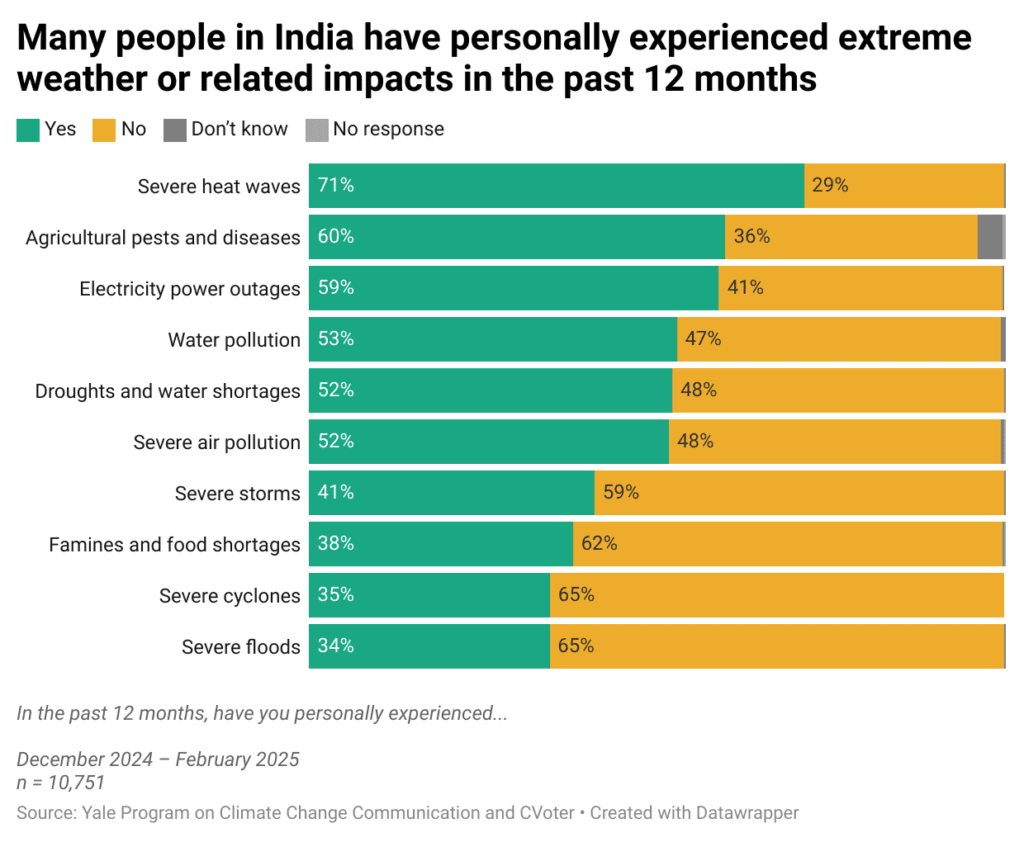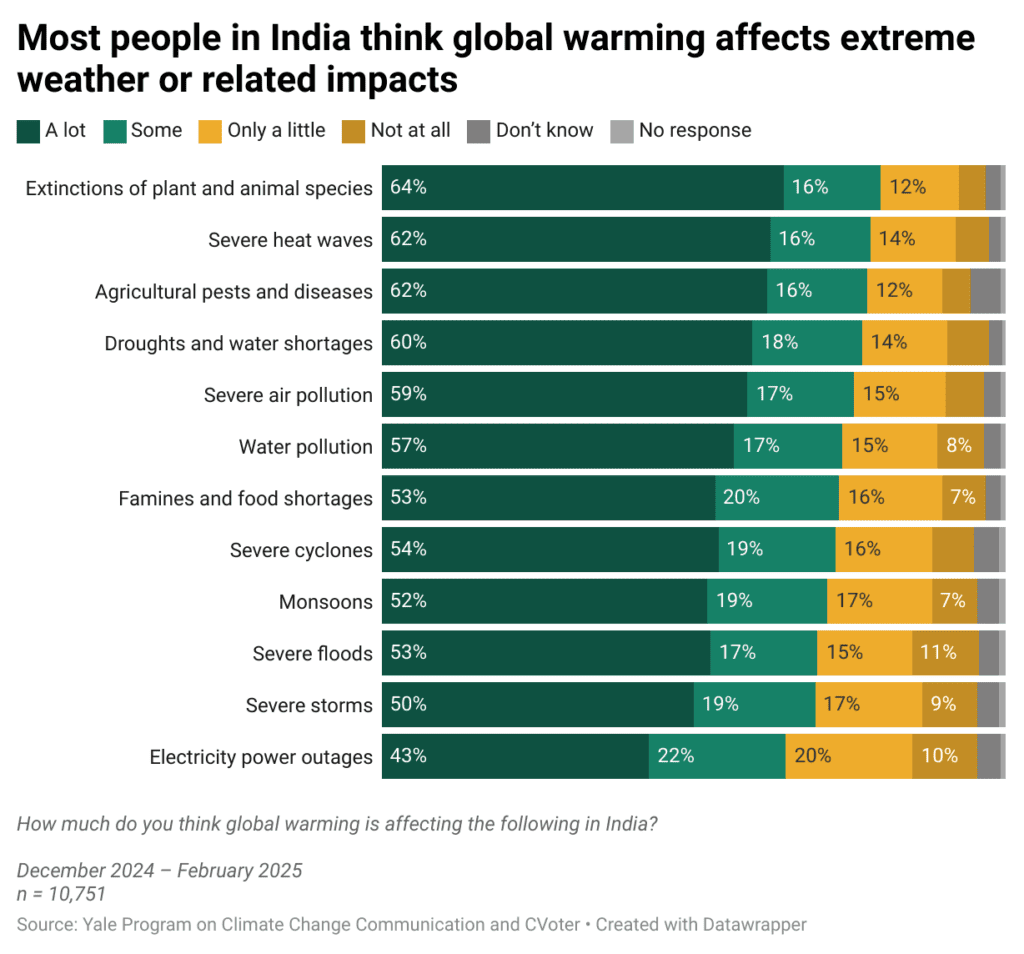Climate Note · May 22, 2025
Climate Impacts in India: Experience, Worry, and Attribution to Global Warming
By Marija Verner, Jennifer Marlon, Jagadish Thaker, Jennifer Carman, Seth Rosenthal, Yashwant Deshmukh, Gaura Shukla, Emily Richards, Emily Goddard and Anthony Leiserowitz
Filed under: Behaviors & Actions, Beliefs & Attitudes and Climate Impacts

As the climate warms, extreme weather events are becoming more frequent and severe across India. Indians have recently experienced extreme heat waves, floods, water shortages, and irregular monsoon patterns. These events not only harm lives and livelihoods but also shape how people perceive both climate change and extreme weather. To better understand public experiences and worries about these events, the Yale Program on Climate Change Communication (YPCCC) and CVoter surveyed 10,751 people in India from December 5, 2024, to February 18, 2025.
Most respondents said they had personally experienced at least one extreme weather event or related impact in the past 12 months. Majorities of Indians said they had experienced severe heat waves (71%), agricultural pests and diseases (60%), power outages (59%), water pollution (53%), droughts and water shortages (52%), and severe air pollution (52%).
Large majorities are worried about extreme weather or related impacts harming their local area. More than half of Indians say they are “very worried” about extinctions of plant and animal species (61%), severe heat waves (56%), agricultural pests and diseases (62%), droughts and water shortages (58%), water pollution (55%), severe air pollution (54%), and famines and food shortages (51%).
Finally, we find that majorities of Indians think global warming is affecting extreme weather and related impacts in India. Half or more Indians say global warming is affecting extinctions of plant and animal species (64%), severe heat waves (62%), agricultural pests and diseases (62%), droughts and water shortages (60%), severe air pollution (59%), water pollution (57%), severe cyclones (54%), famines and food shortages (53%), severe floods (53%), monsoons (52%), and severe storms (50%) “a lot.” Additionally, 43% of Indians think global warming affects electricity power outages “a lot.”
Together, we find that extreme weather events and related impacts are common and deeply worrisome for many people in India. Climate and weather-related risks are not abstract concerns for many Indians but are part of people’s day-to-day lives. Moreover, worry about local impacts is widespread and closely mirrors people’s personal experiences with these events. And, after hearing a definition of global warming, most respondents say that it is affecting these events (especially plant and animal extinctions, heat waves, and agricultural disruptions).
However, a significant proportion (32%) of people in India have never heard of global warming. These findings highlight the critical need to raise public awareness about climate change and local climate impacts and reinforce the urgency of both reducing carbon pollution and preparing for future extreme events.
Methods
This report is based on findings from a nationally representative survey of adults (18+) in India conducted by the Yale Program on Climate Change Communication and CVoter, an international survey company headquartered in Delhi, India. A nationally representative sample of respondents was contacted by mobile telephone using predictive dialing technology and computer-assisted telephone interviewing (CATI). The survey was translated into 12 languages (Hindi, Punjabi, Gujarati, Marathi, Kannada, Malayalam, Tamil, Telugu, Odiya, Bangla, Asamiya, and English) and respondents received the survey in one of those languages based on their geographic location in India. National Census-based demographic parameters were used to create sampling targets for gender, education, and socioeconomic status. The results were also weighed after completion of the data collection to adjust the final sample to match national demographic parameters on gender, age, education, income, religion, and urbanicity. Interview dates: December 5, 2024 – February 18, 2025. Interviews: 10,751 adults (18+). Average margin of error: +/- 1 percentage point at the 95% confidence level.
In the charts, percentage points are rounded to the nearest whole number. As a result, percentages in a given chart may total slightly higher or lower than 100%. Summed response categories (e.g., “very worried” + “moderately worried”) are rounded after sums are calculated. For example, in some cases, the sum of 25% + 25% might be reported as 51% (e.g., 25.3% + 25.3% = 50.6%, which, after rounding, would be reported as 25% + 25% = 51%).
View Data Tables for accessibility


